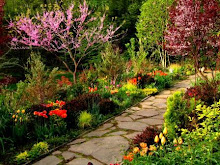
British artist Sam Spenser created this fantasy tree as part of recent exhibit on the color yellow at the Wapping Project in East London. His luminous vision of a plane tree, which materialized near the gallery's entrance, was only part of the fun. A story about the exhibit included intriguing bits about the color yellow ran in the Times (of London, not New York); read reporter Joanna Pitman's take on "Yellow Fever"
here. Photo by Jessica Rolland.
Since I'm always on the lookout for new ideas about the pyschological and other aspects of color, I found this part of the story really interesting:
"Yellow is a colour with diverse and often contradictory meanings. It is often associated with warmth and happiness, but in English, “yellow” can be used as slang for cowardice. In Chinese culture, yellow represents royalty (commoners were forbidden from wearing yellow until modern times), while in Arab culture it can mean insincerity. In South Korea it is associated with jealousy, in Christianity with greed and in 19th-century Europe with mental illness.
Van Gogh frequently used yellow in his paintings, which some believe was a result of his suffering from xanthopsia, a condition that causes the sufferer to see everything as if through a yellow filter. Xanthopsia was a side effect of digitalis, which was used to treat epilepsy. Gauguin also used a great deal of yellow in his paintings, particularly in Tahiti, which perhaps reflected the heat."
Shout-out to
Dark Roasted Blend.


























